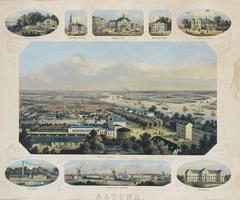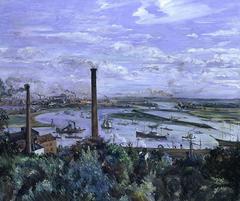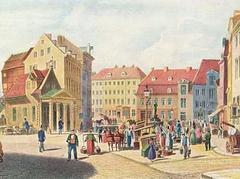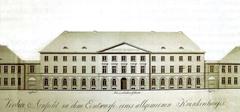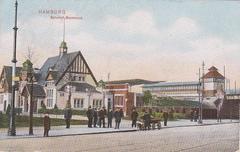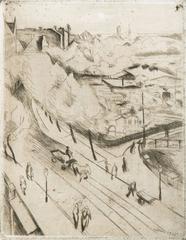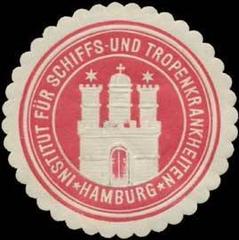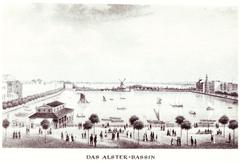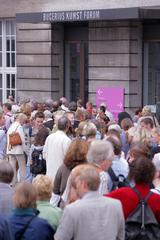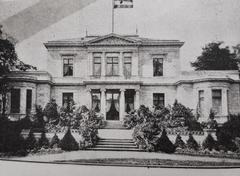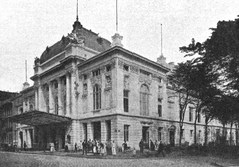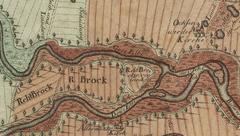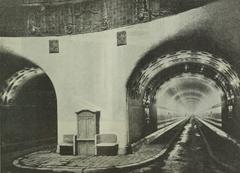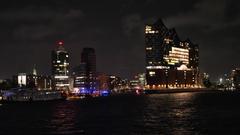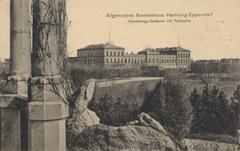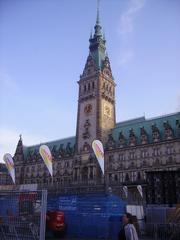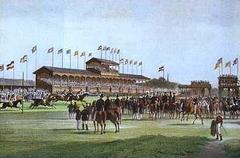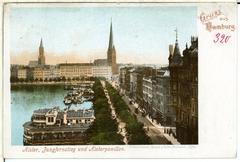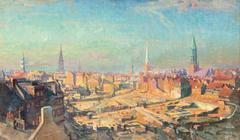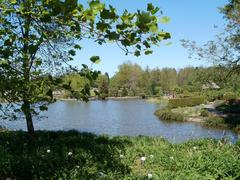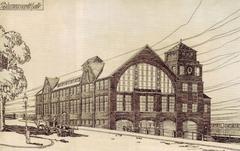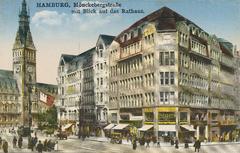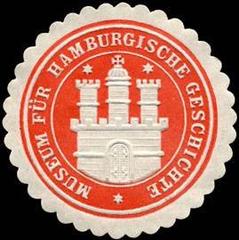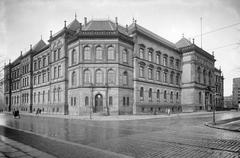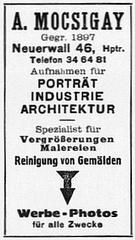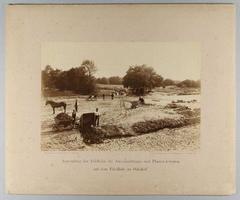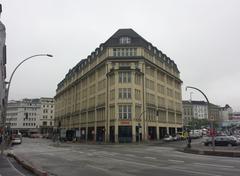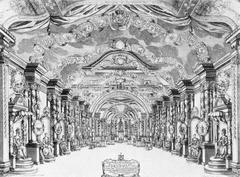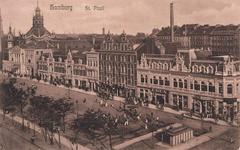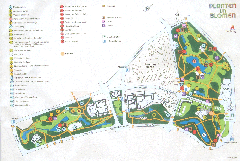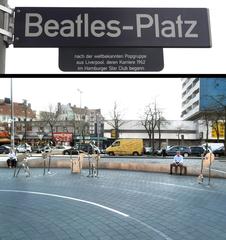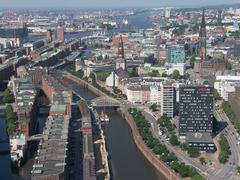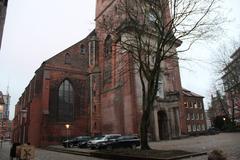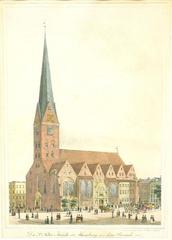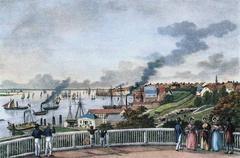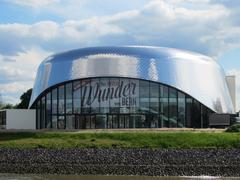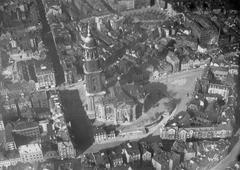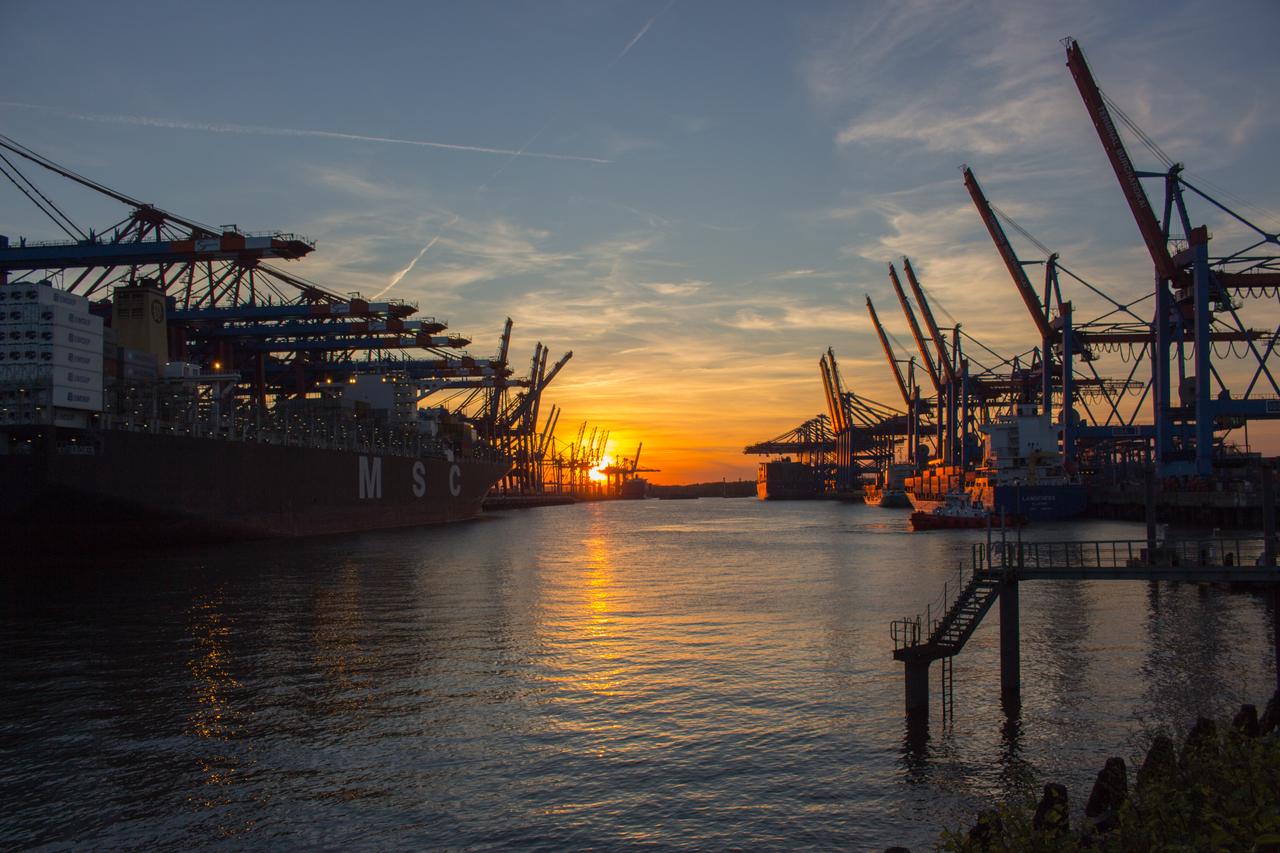
Comprehensive Guide to Visiting Hamburg, Germany
Date: 14/08/2024
Captivating Introduction
Imagine a city where the past and present dance together in perfect harmony, where every cobblestone whispers tales of Vikings and Hanseatic merchants, and where modern skyscrapers stand as testaments to resilience and innovation. Welcome to Hamburg, a city that has gracefully navigated the turbulent tides of history to emerge as one of Germany’s most captivating destinations. From its origins as a fortress in 825 AD, Hamburg has evolved into a vibrant metropolis that offers a unique blend of historical charm and contemporary flair. Whether you’re a history buff, a culture enthusiast, or an adventure seeker, Hamburg has something to offer you. Picture yourself strolling through the maze of red-brick warehouses in Speicherstadt, marveling at the architectural grandeur of Hamburg City Hall, or taking in the panoramic views from St. Michael’s Church. Hamburg’s story is one of transformation and resilience, a city that has risen from the ashes of wars and fires to become a symbol of innovation and cultural richness. So, pack your bags and get ready to embark on a journey through time and charm in the Free and Hanseatic City of Hamburg. (Culture Trip, Britannica).
Table of Contents
- Catching a Glimpse of Hamburg’s Past
- From Medieval Trade to Hanseatic Glory
- The 19th Century Rollercoaster
- Surviving the World Wars
- Modern Hamburg: A Blend of History and Innovation
- Hidden Treasures and Local Tips
- Seasonal Wonders and Local Etiquette
- Fun Challenges for the Adventurous
- Your Hamburg Journey Awaits
- Frequently Asked Questions
- Historical Significance
- World War II and Reconstruction
- Economic Significance
- Cultural Significance
- Architectural Significance
- Hidden Gems and Local Secrets
- Visitor Tips
- Festivals and Events
- Natural Attractions
- Shopping and Entertainment
Discover Hamburg: A Journey Through Time and Charm
Catching a Glimpse of Hamburg’s Past
Ever wondered how a city can be both ancient and modern, resilient and innovative? Welcome to Hamburg, a city that has danced through the centuries with grace and grit. Imagine standing at the confluence of the Elbe and Alster rivers, where a fortress named Hammaburg was built in 825 AD. This was no ordinary fortress; it was the launchpad for Saint Ansgar’s mission to spread Christianity to Scandinavia. Picture the Vikings, with their fierce reputation, attacking and razing the fortress in 845 AD—talk about a dramatic start (Culture Trip).
From Medieval Trade to Hanseatic Glory
Fast forward to the 12th century, and Hamburg is on the rise. Thanks to Emperor Frederick I Barbarossa, who in 1189 granted the city special trading rights, Hamburg was catapulted to Free Imperial City status. Imagine the bustling markets, the ships docking with exotic goods, and the air buzzing with commerce (Culture Trip).
By the 13th and 14th centuries, Hamburg was a shining star in the Hanseatic League, a powerful alliance of trading cities. Think of it as the medieval version of the European Union, but solely for trade. The discovery of the New World may have dimmed the league’s influence, but Hamburg adapted, evolving into an even more prosperous city (Britannica).
The 19th Century Rollercoaster
The 19th century was a wild ride for Hamburg, full of ups and downs. The city had already established Germany’s first stock exchange in 1558 and the Bank of Hamburg in 1619. It even pioneered marine insurance and convoy systems for merchant ships (Culture Trip).
However, in 1810, Napoleon’s troops annexed Hamburg, and in 1842, a catastrophic fire destroyed a third of the city, leaving 20,000 people homeless. But Hamburg’s spirit is unbreakable. The city rebuilt, modernized, and by the end of the century, its population had exploded from 130,000 to 700,000 (Britannica).
Surviving the World Wars
The World Wars were brutal for Hamburg. World War I saw its trade collapse and its fleet stuck in port. Post-war reparations further strained the city (Britannica).
World War II was even harsher. Air raids devastated the city, killing over 55,000 people and destroying much of the infrastructure. Yet, Hamburg rose from the ashes, playing a crucial role in Germany’s post-war recovery and economic miracle (Culture Trip).
Modern Hamburg: A Blend of History and Innovation
Post-war Hamburg underwent a transformation, balancing its historical roots with modern innovation. The harbor remains the economic lifeline, but Hamburg has also become Germany’s media and advertising hub. Its resilience is seen in the reconstructed Speicherstadt warehouse district and the bustling city center (Culture Trip).
Today, Hamburg is a vibrant mix of old and new. From historic landmarks to modern attractions, the city offers something for everyone. Whether you’re exploring the red-brick warehouses of Speicherstadt, marveling at the grandeur of Hamburg City Hall, or taking in the panoramic views from St. Michael’s Church, Hamburg never ceases to impress (Germany Travel Blog).
Hidden Treasures and Local Tips
Speicherstadt
The Speicherstadt, or “City of Warehouses,” is a maze of red-brick buildings and canals. It’s the world’s largest warehouse district and a UNESCO World Heritage Site. Don’t miss Spicy’s Spice Museum for a quirky history lesson (Germany Travel Blog).
Hamburg City Hall
Located at Rathausmarkt, the Hamburg City Hall is not just a government building; it’s a testament to architectural grandeur. With over 600 rooms, it’s a labyrinth of history. Don’t forget to check out the commemorative fountain (Germany Travel Blog).
St. Michael’s Church
Known locally as “Michel,” this Baroque-style church offers breathtaking views of Hamburg from its tower. It’s a spiritual and historical beacon in the city’s skyline (Germany Travel Blog).
Seasonal Wonders and Local Etiquette
Hamburg is a city for all seasons. In winter, the Christmas markets are a magical experience. In summer, the Alster Lakes come alive with boating and picnics. Remember to greet locals with a friendly “Moin!”—it’s the Hamburg way of saying hello any time of the day.
Fun Challenges for the Adventurous
Turn your visit into an adventure with a scavenger hunt. Find the oldest building in Speicherstadt, snap a selfie with the Rathausmarkt fountain, and climb the Michel tower. Collect all three and you’ve truly experienced Hamburg!
Your Hamburg Journey Awaits
Ready to dive into Hamburg’s rich tapestry of history and modern charm? Download the Audiala app for expertly crafted audio guides that reveal hidden gems and local secrets. Whether you’re a history buff or a curious traveler, Hamburg promises an unforgettable adventure.
Frequently Asked Questions
Q: What is the best time to visit Hamburg? A: Hamburg is a year-round destination, but spring and summer offer the best weather for exploring.
Q: How do I get around Hamburg? A: The city’s public transport system, including buses and trains, is efficient and easy to use.
Q: Is Hamburg expensive? A: Hamburg can be pricey, but there are plenty of budget-friendly options for food and accommodation.
So, pack your bags and set off on a journey through time in the Free and Hanseatic City of Hamburg—where every street has a story and every corner hides a secret.
Discover Hamburg: The Gateway to the World
Historical Significance
Picture this: A bustling port city that has been turning heads since the 9th century. Hamburg’s history is as rich as a slice of Franzbrötchen, starting as a mission settlement to convert the Saxons. Its strategic spot on the River Elbe made it a trading powerhouse. By 1189, Emperor Frederick I gave Hamburg a golden ticket: tax-free access to the North Sea, turbocharging its trade game (Wikipedia).
Fast forward to the medieval period, and Hamburg is the Beyoncé of the Hanseatic League, a superstar trading alliance in Northern Europe. Its trade BFF, Lübeck, teamed up in 1241, kickstarting the League and cementing Hamburg’s status as a crucial port (Wikipedia).
World War II and Reconstruction
Hamburg’s role in WWII was intense. It was a major military target and suffered devastating bombings during Operation Gomorrah in 1943. The St. Nikolai Memorial stands tall, reminding us of the city’s resilience. Fun fact: Its spire is still Hamburg’s tallest structure (Germany Travel Blog).
Post-war, Hamburg rose from the ashes like a phoenix, blending modern vibes with historical charm. The Speicherstadt, the world’s largest warehouse district, is not just a UNESCO World Heritage Site but a symbol of Hamburg’s epic comeback (History Hit).
Economic Significance
Hamburg’s port is the big cheese — Germany’s largest and Europe’s third. Covering 28.57 square miles, it’s been a trade titan since 1189, thanks to Frederick I (History Hit).
Beyond the port, Hamburg is the Swiss Army knife of cities: media, commerce, industry — you name it, it’s got it. Home to Germany’s oldest stock exchange and the world’s oldest merchant bank, Berenberg Bank. Major players like Airbus, Blohm + Voss, and Unilever call Hamburg home (Wikipedia).
Cultural Significance
Hamburg is an artsy wonderland. The Elbphilharmonie, a concert hall that opened in 2017, is an architectural marvel with acoustics that make your ears dance (Germany Travel).
The Reeperbahn in St. Pauli? It’s Europe’s rock ‘n’ roll red-light district, where the Beatles cut their teeth. The city’s theaters, museums, and musical shows keep the cultural vibes high (Wikipedia).
Architectural Significance
Hamburg’s architecture is like a mixed tape of history. The Hamburg City Hall, built between 1886 and 1897, is a neo-Renaissance gem with a façade that screams grandeur (History Hit).
The Speicherstadt’s neo-Gothic brick buildings are engineering masterpieces built on timber-pile foundations. This UNESCO site is a testament to Hamburg’s ingenuity (Germany Travel Blog).
Hidden Gems and Local Secrets
- Krameramtsstuben: Step back in time in these charming 17th-century merchant houses.
- Planten un Blomen: A lush park with a stunning Japanese garden, perfect for a peaceful stroll.
- Fischmarkt: Not just for fish lovers! Experience the lively atmosphere every Sunday morning.
Visitor Tips
Best Time to Visit
Spring and summer are prime time. May’s Hamburg Port Anniversary is a ship parade extravaganza, and September’s Open Mouth Food Festival is a culinary dream (Germany Travel Blog).
Must-See Attractions
- St. Nikolai Memorial: A vivid slice of WWII history (Germany Travel Blog).
- Speicherstadt: Dive into the world’s largest warehouse district (History Hit).
- Elbphilharmonie: Catch a concert or just marvel at its design (Germany Travel).
- Reeperbahn: Follow the Beatles’ footsteps and enjoy the nightlife (Wikipedia).
Culinary Delights
Hamburg’s food scene is a feast. Hit the Altona Fish Market for a fish sandwich or try Labskaus, a hearty mix of potatoes, beef, and beets. Don’t miss Franzbrötchen, a cinnamon pastry that’s pure bliss (Germany Travel).
Getting Around
Hamburg’s public transport is top-notch. The HVV network — buses, trains, ferries — has you covered. For a twist, hop on a boat tour of the harbor or canals for a fresh perspective (Germany Travel Blog).
Festivals and Events
From German Unity Day on October 3 to the Hamburg International Queer Film Festival, Hamburg’s calendar is packed with diverse events (Germany Travel Blog).
Natural Attractions
Hamburg balances urban and natural beauty. Relax by the Alster lakes or venture to Lüneburg Heath and Altes Land for hiking and cycling (Germany Travel).
Shopping and Entertainment
Shop till you drop in Hamburg’s varied districts. From posh boutiques to quirky shops, there’s something for everyone. Enjoy performances at theaters and concert halls like Laeiszhalle (Britannica).
Conclusion
Hamburg is a city of contrasts and surprises. Its historical roots, cultural vibrancy, and economic might make it a captivating destination. Whether you’re diving into its past, enjoying modern luxuries, or soaking in its scenic beauty, Hamburg is ready to enchant you. And don’t forget to download Audiala, your ultimate tour guide app, to unlock Hamburg’s hidden gems and stories for an unforgettable adventure! (Culture Trip, Germany Travel Blog, History Hit).
References
- Culture Trip, 2021, Author Culture Trip
- Britannica, 2021, Editors Britannica
- Germany Travel Blog, 2021, Author Germany Travel Blog
- History Hit, 2021, Author History Hit
- Wikipedia, 2021, Contributors Wikipedia
- Guinness World Records, 2021, Author Guinness World Records
- Timeout, 2021, Author Timeout



